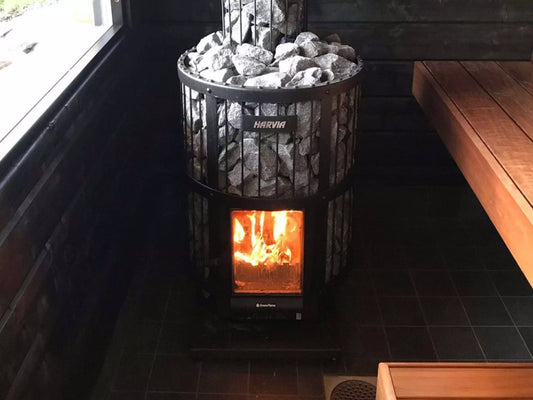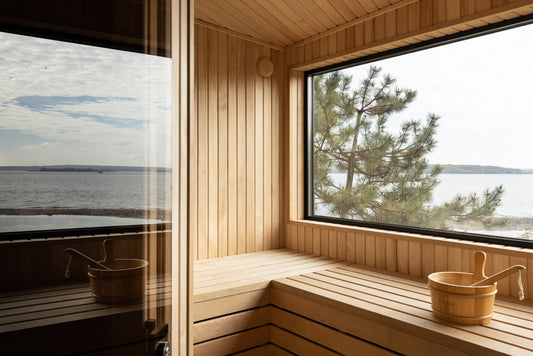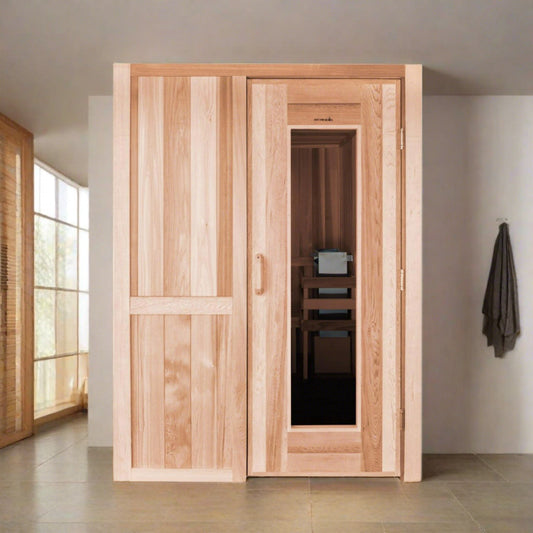
Western Red Cedar, Alaskan Yellow Cedar, Western Hemlock, and Poplar are the primary woods used for building saunas.
Western Red Cedar is the preferred choice for building a sauna. Due to its stability and appearance, it's perfect for interiors and benches. Red Cedar is also water repellent and doesn't secrete resin or overheat. Red Cedarwood is an excellent insulator, heats and cools down the sauna faster, and is highly resistant to fungus and decay.
Sauna's multiple designs in the market allow you to choose from a wide variety, from a two-person capacity to a commercial sauna, indoor or outdoor sauna.
However, all of the saunas have something in common. They are built from woods that don't overheat or secrete resin for the benches and select interior materials resistant to heat and moisture.
So let's break down the main characteristics of each sauna wood.
Western Red Cedar

Red Cedarwood (Thuja plicata) comes from a tree ranging from 210 to 230 ft tall and 10 to 23 ft in trunk diameter. The soft red-brown timber has a straight grain and few knots. It has a distinct appearance, aroma, and high natural resistance to decay.
Red Cedarwood saunas do not expand or contract as much as other woods when the temperature fluctuates, making them great for indoor and outdoor applications. On top of it, the natural essential oil present in this wood smells terrific and has antibacterial properties.
Alaskan Yellow Cedar

Alaskan Yellow Cedar is a Cypress tree (not a cedar) once used by western Native American tribes to fashion totem poles. It is highly resistant to fungus and decay and is mostly chosen for its appearance – an attractive yellow color. It is aromatic but usually not as pleasant or decadent as that of Red Cedarwood.
Western Hemlock


Western Hemlock is not as resistant to decay as the previous two and can expand a bit. It is solid wood but can emit a faint sour smell when it is fresh.
Poplar Wood

There are many Poplar species; most are soft and porous, which means they get average marks in tests for strength, resistance to decay, and durability. Poplar isn't well suited for sauna interiors and benches; it is best used for exteriors with excellent durable marks.
The type of wood used to build a sauna makes all the difference in how well the sauna will age and how well it will endure daily use. Selecting a wood with poor decay resistance, varying grain directions, and knots may be less expensive in the short run. But a sauna built with high-grade wood will be more costly, but in the long run, you'll have a sauna looking as new through the years.
If you want to keep your home sauna looking as brand new, we recommend the use of the Sauna Wood Oil. You can buy it here.







